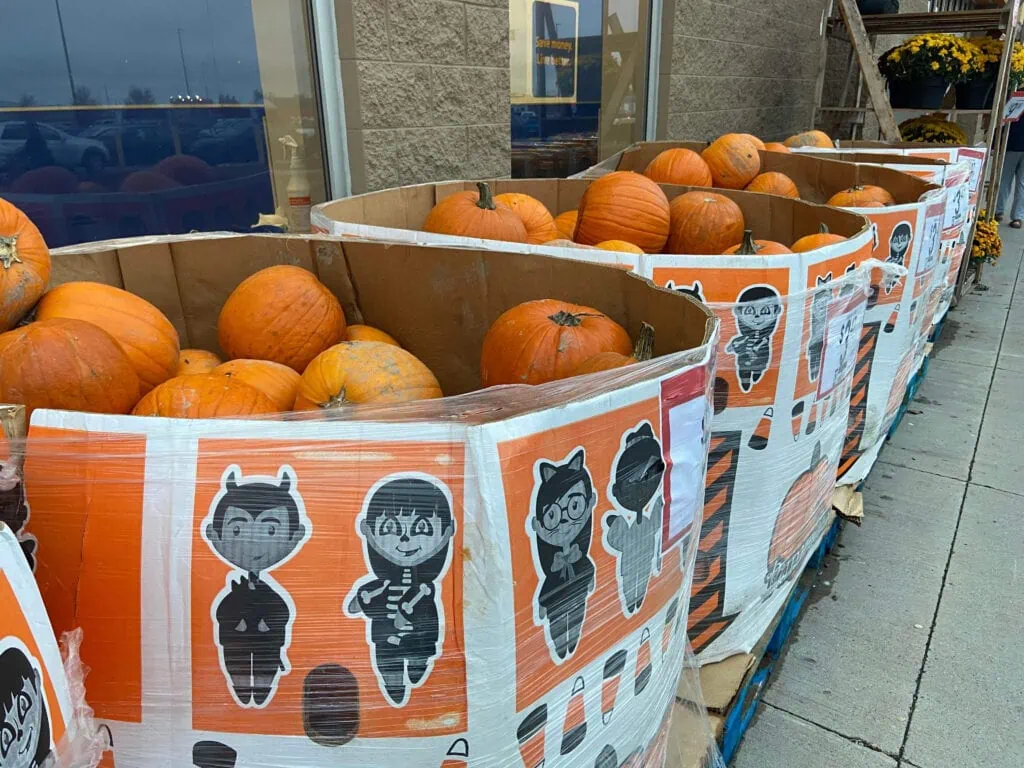“Pumpkin carving is a valuable tradition connecting us to the seasons”, says first-year University of King’s College student, Madelyn Edmunds.
I agree, but all parts of the pumpkin should be used for this tradition to be ecologically responsible.
According to a CBC News report published last Halloween, 80,000 tonnes of pumpkins are grown each year in Canada. Two-thirds of those are sold to consumers.
The rotten side of this is many pumpkins end up in landfills. Rotting pumpkins release methane, a greenhouse gas that is over 20 times more potent than carbon dioxide. That makes all those wasted pumpkins a little scary.
In Nova Scotia, compostable materials are banned from disposal sites. This isn’t true for all provinces or cities.
What does that mean for pumpkins across the country come November?
Greener post-Halloween pumpkin disposal
Edmunds is a self-proclaimed pumpkin enthusiast. For their family, carving pumpkins is a family tradition. Pumpkins are an irreplaceable decoration. Edmunds is determined to practice more environmentally conscious carving going forward.
“It’s more of a Thanksgiving tradition of carving pumpkins together and leaving them out until Halloween,” Edmunds says.
They acknowledge there is alternative, albeit not the most environmentally friendly, decor to pumpkins including plastic pumpkins, spiders and bats. These decorations also represent the changing seasons. The problem? They don’t offer the artistic element of pumpkin carving.
Fortunately, there are ways to keep the pumpkin tradition while minimizing waste.
“I hope we slowly become better at using all elements of the pumpkin,” says Edmunds.
They’ve been recently inspired to roast pumpkin seeds and make pumpkin pie from their next jack-o-lantern. It is easy to forget pumpkins can be both decorations and food.
Pumpkin seeds are a valuable source of protein. One ounce of shelled seeds contains seven grams of protein. The flesh of the pumpkin can be made into soups, pies, breads and more!
I love to roast pumpkin seeds with soy sauce or Worcestershire sauce to make a delicious snack. It’s a shame to forget about all the delicious possibilities and sacrifice jack-o-lanterns to the dreaded methane heap.
Why can’t we ditch the pumpkin altogether?
One of the reasons Edmunds loves pumpkins so much is the symbolism of fall. They make us think about things such as decorative corn on Thanksgiving tables or hay bales kids climb on at pumpkin patches.
“It’s a bit odd. An empty gesture towards a farm lifestyle. It highlights a disconnect,” Edmunds says, referring to the harvest aspect of fall traditions and symbols.
I’ve lived in cities my whole life. I get most of my food from grocery stores and occasionally a few vegetables from my garden. We city dwellers couldn’t be further removed from the source of our food.
So why do we use these symbols?
“It’s because we want to be connected to nature,” Edmunds says.
The origin of the jack-o-lantern is rooted in the availability of regional root vegetables and gourds.
In Ireland and Scotland, people used potatoes or turnips. Large beets were used in England. Pumpkins are traditional to the Americas and for centuries have been a staple in the diets of Indigenous peoples, alongside corn and beans. The tradition of making jack-o-lanterns was brought to North America from Ireland, using natively found pumpkins.
How do we hold onto this symbol of our connection to the planet?
It would be nice if we honoured the traditions of both immigrants and Indigenous peoples. We can combine the tradition of pumpkin carving with the fall harvest. One way to do this is to use more native fruits and vegetables in our meals, including our pumpkin leftovers.
Coming together to reduce food waste
One of my favourite things about fall is having friends over for dinner parties. I like to decorate the table with colourful leaves and cook dishes like butternut squash soup, apple pie and corn on the cob. These meals are a great way to give thanks to the earth and to eat sustainably and locally.
Living in a residence makes having these ritual dinner parties difficult for me. I don’t have access to a kitchen or dining space other than the meal hall. However, this doesn’t mean on-campus students can’t feel more connected to the earth.
A visit to a pumpkin patch is a fun way to soak up pleasant fall feelings. This way, rather than simply buying a pumpkin from the grocery store, we can get out of the city and see where the pumpkins are grown.
“It’s a valuable tradition that brings us closer to the natural world and the farming process,” Edmunds says.
There are many pumpkin patches only a short drive from Halifax, such as Noggins Corner Farm Market in Greenwich or Riverbreeze Farm in Truro. For students who don’t have a way out of the city, there’s also the Bedford Basin Farmers Market. You can look for locally grown pumpkins alongside other seasonal produce. Just over half of all the food produced in Canada is wasted or lost every year. 32 per cent of it could be saved. By looking for ways to use every part of our food and consciously composting what we can’t, we can make a difference.



Recent Comments